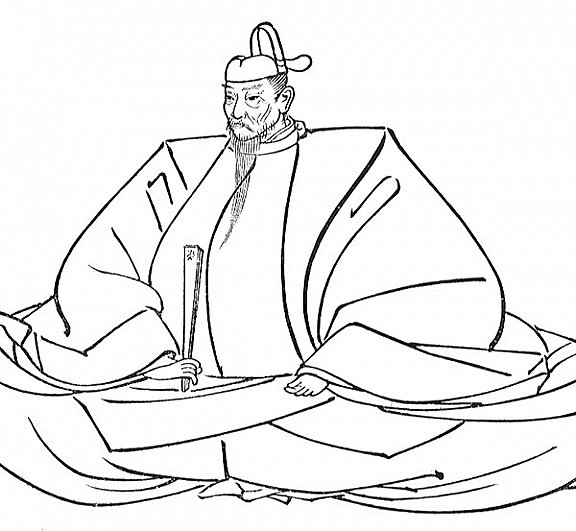Paul Miki: My Only Crime Is Following Christ

Hideyoshi who ordered the executions.
IN the sixteenth and seventeenth centuries, the Japanese martyred thousands of Christians. The most famous was Paul Miki.
Christianity first came to the islands through Portuguese Jesuit missionary Francis Xavier, who landed at Kagoshima in 1549. The growth of Christianity was swift since the powerful Japanese official Nobunaga encouraged Christianity as a counterforce to Buddhism. By 1590 the number of Christians had grown to about two hundred thousand, and counted among them were many generals and nobles.
The regent Toyotomi Hideyoshi favored Christians when he divided the land after unifying Japan. However, in 1587, because of the arrogance of some Christian leaders, he became infuriated with the Jesuits and ordered them out of the country. The Jesuits donned Japanese clothing and went undercover.
Hideyoshi permitted this defiance of his orders because he needed Portuguese traders to alleviate the Japanese desire for foreign goods, obtain revenues for his wars, and rebuild his palace that had recently been damaged in an earthquake. The Portuguese had a lock on the China trade and charged all that the market would bear for their cargoes of silk and gold. Hideyoshi negotiated with the Spanish in the Philippines, hoping to obtain more favorable terms of trade, sure that competition would bring down prices.
Soon, enemies of Christianity planted suspicions in Hideyoshi’s ears. They suggested that the Christians might serve as a fifth-column, betraying their nation to the Spanish. Europeans had conquered many Asian lands. Why would they not have designs on Japan, too?
The arrival of Franciscan missionaries disturbed the delicate balance of Japanese relations with the church. Portuguese-Spanish rivalries were strong and the Franciscans accused the Jesuits of cowardice for worshipping secretly and wearing Japanese garb. The Jesuits pleaded with the Franciscans to work quietly, predicting dire consequences if they were too brazen with preaching and processions. They also accused them of violating a papal edict that allowed only Jesuits to preach in Japan.
Things came to a head after a typhoon drove a Spanish ship off course. The boat carried valuable cargo. Japanese officials looted the ship and the Franciscans protested to Hideyoshi. The pilot of the ship tried to intimidate the Japanese by threatening Spanish retaliation. He displayed a world map that showed the vast realm that Spain controlled. Asked how it was possible that one nation could seize so much of the world, he replied that Spain first sent their monks to convert the inhabitants. When he heard this, Hideyoshi decided to rid himself of the foreigners.
On this day, 5 February 1597, following a month of torture, humiliation, and forced marches, the Japanese crucified twenty-six Christians in Nagasaki: six Franciscan friars, seventeen Japanese converts, and three Jesuits.
The martyrs sang hymns on their crosses. One was a boy of only ten. Standing out from the rest was thirty-three-year-old Paul Miki. He preached from his cross, saying, “I have committed no crime, and the only reason why I am put to death is that I have been teaching the doctrine of Our Lord Jesus Christ. ... At this critical time, when, you can rest assured that I will not try to deceive you, I want to stress and make it unmistakably clear that man can find no way to salvation other than the Christian way.”
—Dan Graves
----- ----- -----
Read a quote by a Japanese martyr "Japanese sacrifice"





